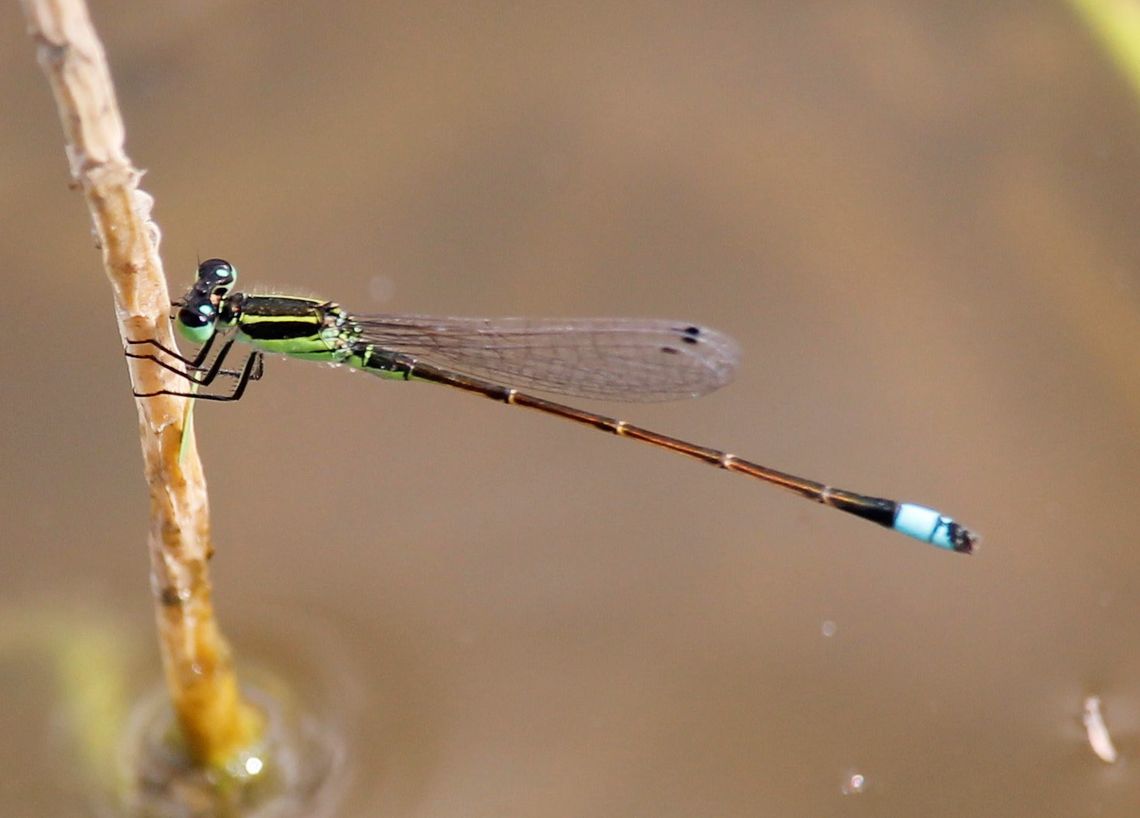Many folks are familiar with the small, dragonfly- like insects that skirt around bodies of permanent or semi-permanent water. In fact, people are so accustomed to that sight there is a species that calls Texas home that can “light up” the waterside with brilliant flashes of blue and green, and that is the damselfly that goes by the name Rambur’s Forktail.
The Rambur’s Forktail ( Ischnura ramburii) is a broad-winged damselfly that rarely exceeds 1 ¾ inches in total body length, which is about average compared to other damselfly species. Like other insects, it has three body parts: the head, the thorax (what the wings and legs are attached to), and the abdomen. In adult males, the thorax is a richly colored green with three thick black stripes that run lengthwise. The abdomen is colored with a goldish tint with light bands where the segments are, save for the last segment, which is colored a brilliant blue with black edging. The head is black and green, with blueish-greenish colored eyes. The wings are clear, and the six legs are black in coloration. Adult females come in three different appearances: some look superficially like dullcolored males, others are overall orange in coloration, and the other is primarily olive-colored.
When perched this species, as well as other damselfly species, will hold their clear wings together, upright, and closed over the abdomen. This is one of the many ways to differentiate damselflies and “true” dragonflies as the latter will sit with their wings held open either vertically or horizontally.
As far as damselflies go, this variety is widespread, but not with the large range of some of its cousins. It typically can be observed south of I-40 throughout the United States, save for the range in the northeast. Like other damselflies, it favors areas with permanent or at least semipermanent water sources, it is obviously more common in areas with wetlands, streams, creeks, and rivers. However, unlike most other Damselfly species, this variety will oftentimes perch on the bare ground in open shorelines.
All damselflies are predatory insects feeding primarily on flies, mosquitoes, and other small flying insects. As aquatic nymphs, a substantial portion of the diet for most damselfly species apparently are water fleas.
Damselflies are notorious for their epic courtship dances and mating rituals. While varying species by species, the males of all varieties of damselfly will perform a choreographed display of “pick me, pick me”. Once a female selects a suitable mate, the two will combine in an unusual posture that is often called a “heart” or a “wheel” where the male will grab a female by the head with reproduction claspers on his tail while the female will curl her tail up and under to receive fertilization.
Upon fertilization, the female will lay her eggs under the surface of the water. While submerged while performing this activity, which can last up to almost an hour, the male will often “guard” the area where the female entered the water. Once hatched, the juveniles are referred to as nymphs and lack wings. They reside underwater until they molt multiple times with the last molt resulting in the adult form with wings.
Often referred to as dragonflies, the Rambur’s Forktail is actually classified as a damselfly. Besides the placement of the wings while perched, there are many other ways to tell the difference between these two groups of insects, including body shape, the position and shape of the eyes, the shape of the thorax, etc. However, the easiest way to distinguish the two is the aforementioned placement of the wings while perched.





















